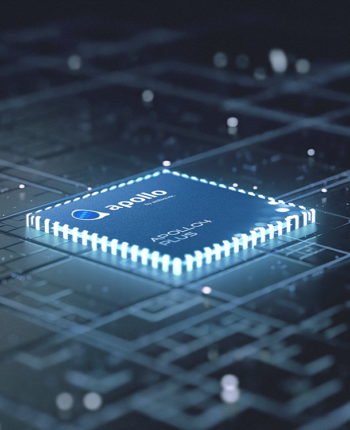
Development of generalizable automatic snooze staging using heart level and movement determined by huge databases
far more Prompt: A stylish girl walks down a Tokyo Road stuffed with warm glowing neon and animated metropolis signage. She wears a black leather-based jacket, a long purple costume, and black boots, and carries a black purse.
It is possible to see it as a means to make calculations like irrespective of whether a little house must be priced at ten thousand bucks, or what kind of temperature is awAIting from the forthcoming weekend.
SleepKit supplies a model manufacturing facility that means that you can very easily develop and educate custom-made models. The model manufacturing facility contains numerous present day networks like minded for successful, actual-time edge applications. Each and every model architecture exposes several superior-level parameters that may be used to personalize the network to get a supplied software.
“We believed we needed a whole new plan, but we bought there just by scale,” claimed Jared Kaplan, a researcher at OpenAI and one of several designers of GPT-three, inside a panel dialogue in December at NeurIPS, a leading AI conference.
Prompt: Animated scene features an in depth-up of a brief fluffy monster kneeling beside a melting purple candle. The artwork model is 3D and realistic, by using a deal with lighting and texture. The mood of your painting is among speculate and curiosity, given that the monster gazes in the flame with wide eyes and open up mouth.
SleepKit gives a variety of modes which can be invoked for a presented task. These modes is often accessed through the CLI or right inside the Python deal.
SleepKit consists of quite a few built-in tasks. Each individual undertaking provides reference routines for training, assessing, and exporting the model. The routines might be personalized by supplying a configuration file or by location the parameters right in the code.
Prompt: A Motion picture trailer featuring the adventures of the thirty 12 months outdated space guy carrying a crimson wool knitted bike helmet, blue sky, salt desert, cinematic fashion, shot on 35mm film, vivid hues.
The latest extensions have addressed this issue by conditioning Each and every latent variable about the Other individuals prior to it in a series, but That is computationally inefficient as a result of introduced sequential dependencies. The Main contribution of this work, termed inverse autoregressive stream
Basic_TF_Stub can be a deployable key phrase recognizing (KWS) AI model depending on the MLPerf KWS benchmark - it grafts neuralSPOT's integration code into the prevailing model website so that you can help it become a performing key phrase spotter. The code employs the Apollo4's very low audio interface to gather audio.
Buyers basically point their trash item in a display screen, and Oscar will tell them if it’s recyclable or compostable.
It truly is tempting to give attention to optimizing inference: it is actually compute, memory, and Strength intense, and an exceptionally seen 'optimization focus on'. In the context of complete program optimization, even so, inference will likely be a little slice of In general power intake.
Strength displays like Joulescope have two GPIO inputs for this reason - neuralSPOT leverages equally to assist identify execution modes.
Accelerating the Development of Optimized AI Features with Ambiq’s neuralSPOT
Ambiq’s neuralSPOT® is an open-source AI developer-focused SDK designed for our latest Apollo4 Plus system-on-chip (SoC) family. neuralSPOT provides an on-ramp to the rapid development of AI features for our customers’ AI applications and products. Included with neuralSPOT are Ambiq-optimized libraries, tools, and examples to help jumpstart AI-focused applications.
UNDERSTANDING NEURALSPOT VIA THE BASIC TENSORFLOW EXAMPLE
Often, the best way to ramp up on a new software library is through a comprehensive example – this is why neuralSPOt includes basic_tf_stub, an illustrative example that leverages many of neuralSPOT’s features.
In this article, we walk through the example block-by-block, using it as a guide to building AI features using neuralSPOT.
Ambiq's Vice President of Artificial Intelligence, Carlos Morales, went on CNBC Street Signs Asia to discuss the power consumption of AI and trends in endpoint devices.
Since 2010, Ambiq has been a leader in ultra-low power semiconductors that enable endpoint devices with more data-driven and AI-capable features while dropping the energy requirements up to 10X lower. They do this with the patented Subthreshold Power Optimized Technology (SPOT ®) platform.
Computer inferencing is complex, and for endpoint AI to become practical, these devices have to drop from megawatts of power to microwatts. This is where Ambiq has the power to change industries such as healthcare, agriculture, and Industrial IoT.
Ambiq Designs Low-Power for Next Gen Endpoint Devices
Ambiq’s VP of Architecture and Product Planning, Dan Cermak, joins the ipXchange team at CES to discuss how manufacturers can improve their products with ultra-low power. As technology becomes more sophisticated, energy consumption continues to grow. Here Dan outlines how Ambiq stays ahead of the curve by planning for energy requirements 5 years in advance.
Ambiq’s VP of Architecture and Product Planning at Embedded World 2024
Ambiq specializes in ultra-low-power SoC's designed to make intelligent battery-powered endpoint solutions a reality. These days, just about every endpoint device incorporates AI features, including anomaly detection, speech-driven user interfaces, audio event detection and classification, and health monitoring.
Ambiq's ultra low power, high-performance platforms are ideal for implementing this class of AI features, and we at Ambiq are dedicated to making implementation as easy as possible by offering open-source developer-centric toolkits, software libraries, and reference models to accelerate AI feature development.

NEURALSPOT - BECAUSE AI IS HARD ENOUGH
neuralSPOT is an AI developer-focused SDK in the true sense of the word: it includes everything you need to get your AI model onto Ambiq’s platform. You’ll find libraries for talking to sensors, managing SoC peripherals, and controlling power and memory configurations, along with tools for easily debugging your model from your laptop or PC, and examples that tie it all together.
Facebook | Linkedin | Twitter | YouTube